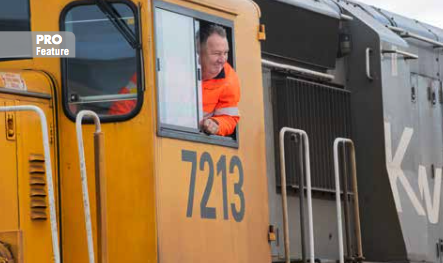The government has a billion dollars a year to dish out for regional development initiatives, so will this region get in on the action?
Hawke’s Bay is in line for tens, or possibly even hundreds, of millions of dollars’ worth of funding through the government’s $3 billion Provincial Growth Fund (PGF).
Local councils and other backers of several large projects aimed at stimulating economic growth in the region are hoping for multimillion-dollar contributions from the PGF. But no firm commitments have been made yet – other than $5 million to re-open the Napier–Wairoa rail link.
That’s because in most cases, the government wants to see comprehensive business plans ahead of backing the regional initiatives and the Hawke’s Bay projects that could be candidates for PGF funding are still in the process of drawing up their plans.
As part of the Labour-New Zealand First coalition agreement, the government has committed to investing $1 billion a year for the next three years into economic development initiatives aimed at lifting productivity in the provinces.
The PGF’s priorities are to: “enhance economic development opportunities, create sustainable jobs, enable Maori to reach full potential, boost social inclusion and participation, build resilient communities, and help meet New Zealand’s climate change targets”.
While all provinces (outside Auckland, Wellington and Christchurch) are eligible for funding, Hawke’s Bay is one of six ‘surge regions’ prioritised for early investment. (The other surge regions are Northland, Bay of Plenty, East Coast, Manawatu- Whanganui and the West Coast.)
The flow of PGF applications for this province is being overseen by the governance group for Matariki – Hawke’s Bay’s Regional Economic Development Strategy (REDS).
While the writing of multimillion-dollar cheques for Hawke’s Bay initiatives isn’t going to happen until detailed business cases are prepared and deals signed off by the government, the good news for the region
is the preparation of those business cases can also be funded through money from the fund.
An early recipient of business case funding is the proposed Hawke’s Bay Food Innovation Hub – a project identified by REDS as a regional priority – which in June received a $215,000 grant from the PGF.
The grant will help fund a feasibility study and business case for the project, which has the support of the Hastings District Council, Napier City Council, Hawke’s Bay Regional Council and businesses.
The councils and 13 other organisations engaged in the food, beverage and agri- tech sectors have contributed an additional $35,000 towards the study and business case.
The project also has support from other entities including Business Hawke’s Bay, Food Innovation Network (FINZ), Ministry of Business, Innovation and Employment, Central Hawke’s Bay District Council, Wairoa District Council and the University of Waikato.
If it goes ahead, the hub – expected to cost about $20 million and involve a further
application for substantive funding from the PGF – would bring together businesses and stakeholders in the food, beverage and agricultural technology sectors to collaborate and conduct research and development.
Hastings District Council’s economic development team is leading the current phase of the project, reporting to the REDS governance group. The council’s group manager, economic growth, Craig Cameron described the project as a “unique opportunity to potentially establish a food innovation hub facility that will ultimately facilitate business growth and innovation, drive investment and economic growth, and create jobs”.
The food hub is one of the council’s ‘Big Six’ focus areas for regional growth and prosperity, along with more social and affordable housing, industrial expansion, the relocation of government services to the district, residential growth, and improving rural productivity and roading.
In a recent call for government co-funding to promote the Big Six initiatives, Hastings Mayor Sandra Hazlehurst said the six broad areas of investment opportunity are all interlinked to enable rapid regional social and economic growth.
“Important in our social priorities is the increase of sustainable employment options for our community, with a focus on youth. By working closely with government, agencies and our neighbouring local authorities we can unlock and bring forward delivery on these investments in short-to-medium time frames (one to three years).”
Meanwhile, Napier City Council is also lobbying for its slice of the PGF pie. The council is working on plans for a $53 million upgrade of the National Aquarium through a partnership with Weta Workshop, Waikato University, Air New Zealand and others.
The council would contribute $102 million to the project, provided it can secure the remaining funding from other sources, and it says the government has indicated it is looking to contribute $20–25 million through the PGF.
Napier Mayor Bill Dalton said the potential to move ahead with the aquarium development and other significant regional development projects made for exciting times, but it was important that the PGF application process was managed “properly and professionally” as was happening through the oversight of the REDS governance group.
“We have our systems in place and we have some applications ready to go, but we’ll prioritise them in the governance group and they’ll go down to the government in the correct form.”


